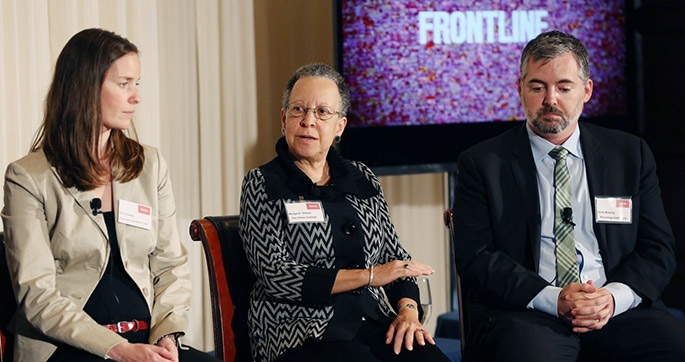

The “American dream”—the idea that, with enough elbow grease, anyone can have the house, the car, the relatively comfortable lifestyle—is getting harder and harder to attain.
No one knows that better than the members of the Neumann and Stanley families. From the globalization shift of the early ‘90s through the dot-com boom and beyond, documentary filmmakers Tom Casciato and Kathleen Hughes and FRONTLINE’s Bill Moyers followed the ups and downs of these Milwaukee-area families who, despite hard work, have struggled to achieve and maintain financial stability.
Last week, FRONTLINE hosted a special preview of Two American Families, the latest installment of the series, which updates viewers on how the Stanleys and Neumanns are coping with the fallout from the Great Recession. (Spoiler alert: The past two decades haven’t been too kind to many Americans, our protagonists included.)
“This is a story about the change that happens in people’s lives,” said Margaret Simms, director of the Urban Institute’s Low Income Working Families Project and a panelist invited by FRONTLINE to discuss the film. “Part of what policy is about is trying to target people who need assistance in moving toward—whether it’s the American dream, or just being able to get above that line, keep their head above water on a consistent basis.”
In addition to Simms, the post-film panel discussion featured the Pew Economic Mobility Project’s Erin Currier, journalist and author Hedrick Smith, and Brookings Institution’s Scott Winship.
The highlights of their conversation illuminated the challenges faced by those who are chasing a more and more elusive American dream:
- In the United States, 43 percent of those raised in the bottom fifth income level stay in the bottom fifth throughout their lives, explained Currier. Plus, growing up middle-class doesn’t mean you’re set for life: Studies show that half of African Americans, and just under a third of whites, raised in solid middle-income homes ultimately fall out of the middle class.
- Both Smith and Winship stressed that people who re-enter the workforce after losing a job have a hard time bouncing back—often making a third less than they earned in their previous positions.
- Post-secondary education—though not necessarily a four-year college degree—is crucial for upward mobility, said Currier.
“The story you’ve got here is an archetypal Greek story that is really an American tragedy, and we need to do something about it,” said Smith.
Watch Two American Families on PBS. See more from FRONTLINE.
Two American Families airs on PBS on July 9. Photo of Erin Currier, Margaret Simms, and Scott Winship at the National Press Club by Simona Combi / The Urban Institute.
Photo by Seth Wenig/ AP
Let’s build a future where everyone, everywhere has the opportunity and power to thrive
Urban is more determined than ever to partner with changemakers to unlock opportunities that give people across the country a fair shot at reaching their fullest potential. Invest in Urban to power this type of work.